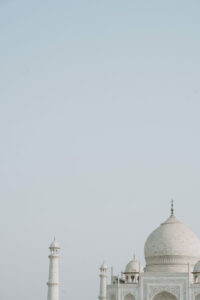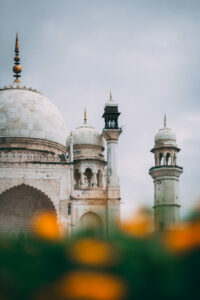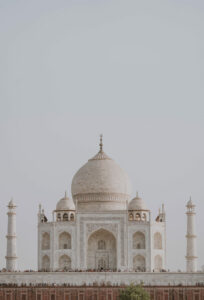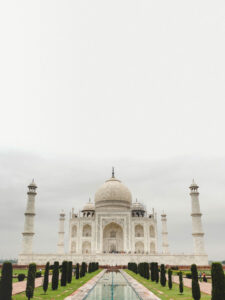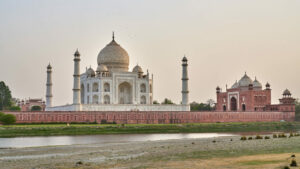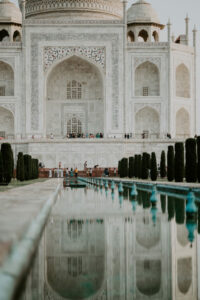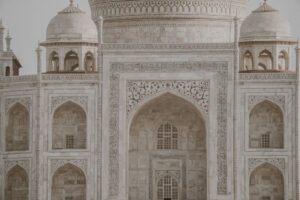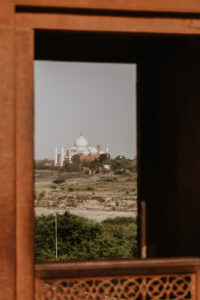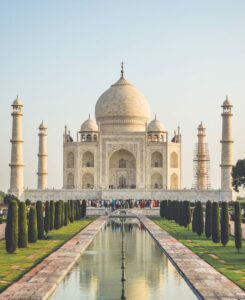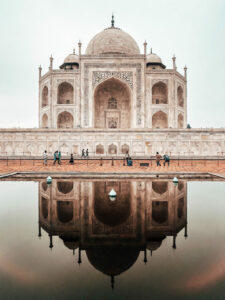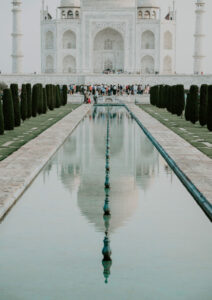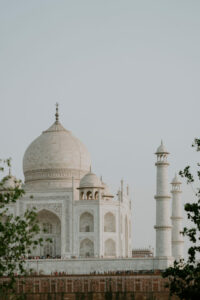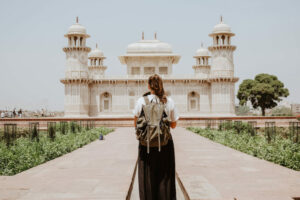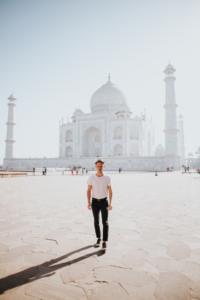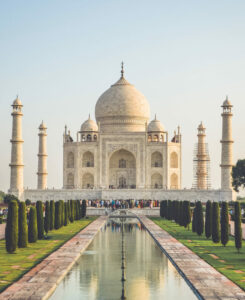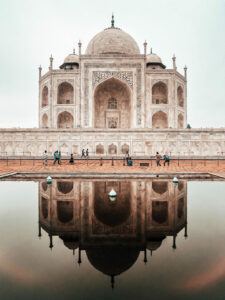India
Taj Mahal
the majesty of Asia
welcome to the taj mahal
The poet Rabindranath Tagore described it as “a tear upon the cheek of eternity”; Rudyard Kipling as “the embodiment of all things pure”; while its creator, Emperor Shah Jahan, said that he made “the sun and the moon shed tears from their eyes”.
Every year, tourists who exceed twice the population of Agra pass through its gates to catch a unique glimpse of what is considered to be the most beautiful building in the world. Few have been disappointed.
history
The Taj was built by Shah Jahan as a memorial to his third wife, Mumtaz Mahal, who died giving birth to their fourteenth child in 1631.
Mumtaz’s death left the Emperor so heartbroken that his hair would turn gray virtually overnight.
Construction of the Taj began the following year; although the main building is thought to have taken eight years to construct, the entire complex was not completed until 1653.
A short time after it was finished, Shah Jahan was overthrown by his son Aurangzeb and imprisoned in Agra Fort, where for the rest of his days he could only watch his creation through a window.
After his death in 1666, Shah Jahan was buried here alongside his beloved Mumtaz. In total, some 20,000 people from India and Central Asia worked on the building.
Specialists from Europe were brought in to produce the exquisite marble screens and pietra dura (marble inlays) made from thousands of semi-precious stones.
The Taj was designated a World Heritage Site in 1983 and today looks almost as pristine as when it was first built, although it underwent a huge restoration project in the early 20th century.
welcome to the taj mahal

how to get
The Taj Mahal can be visited on a day trip from Delhi. Agra is well connected by rail. The main railway station is Agra Cantt. Shatabdi Express high-speed services operate from Delhi, Varanasi and cities in Rajasthan.

how to turn
There are the official 24-hour prepaid rickshaw and taxi cabs just outside the Agra Railway Station. Use them to avoid the hassle, and if you book a tour, check the quality of your vehicle to ensure it is satisfactory.

where to sleep
Most people arrive on a day trip from New Delhi or stay in Agra. There are many great hotels to choose from.

when to go
The best time is from November to February, otherwise it can be unbearably hot or rainy. You'll still be able to get some great off-season discounts.
book yours
vacation
A selection of the best hotels around the Taj Mahal, in partnership with Booking.com. You can book your favorite and ideal hotel for your holiday at the Taj Mahal directly on the portal. You just have to leave, the pearl of India awaits you.
welcome to the taj mahal
The Taj Mahal (meaning “Crown of the Palace”) is an ivory-white marble mausoleum on the south bank of the Yamuna River in the Indian city of Agra.
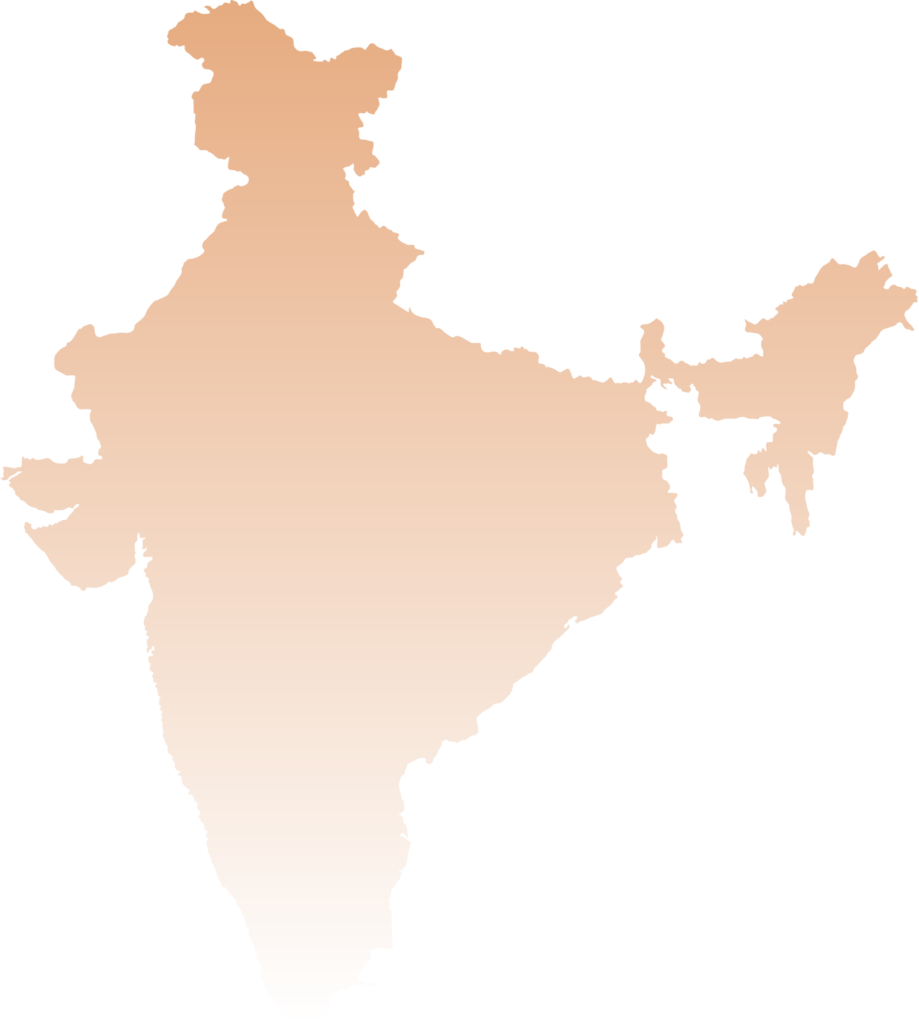
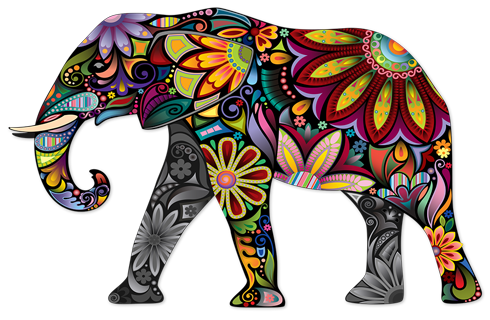
Tickets
Every year, millions of people visit the imposing and mysterious Taj Mahal palace in India. For foreigners, the entrance fee to the Taj Mahal is 1,000 rupees. Indian citizens pay only 40 rupees. Children under 15 are free. Tickets can be purchased at the ticket offices near the entrance gates or online at this site. Read our pricing guide.
Upon exiting the East Gate after your visit, head to Cafe Coffee Day for coffee and muffins, clean restrooms, and welcome air conditioning.
Where to eat in Agra:
- Esphahan: There are only two sittings each night at Agra’s finest restaurant (6.30pm and 9.30pm), so reserving a table is essential. The exquisite menu is chock full of unique delicacies and rarely seen regional heritage dishes.
- Mama Chicken: This superstar dhaba is a must: unsupervised veg duelists and street glory employing 24 cooks on the run, each manning open-air tandoori or other traditional utensils. They whip up some outrageously good sandwiches (kathi) (try chicken tikka or paneer tikka)
- Pinch of Spice: This is the best place outside the five-star hotels to indulge in rich curries and succulent tandoori kebabs. The murg boti masala (chicken tikka swimming in a rich, spicy country gravy) and paneer lababdar (unfermented cheese cubes in a spicy red gravy with stir-fried onions) are outstanding.
What to take:
- Mutter Paneer: A vegetarian dish consisting of peas and paneer in tomato gravy, topped with garam masala.
- Biryani: The infusion of spices and seasonings combined with long grain Basmati rice and tenderly cooked meat (or vegetables), Lucknawi or Awadhi Biryani is a feast in itself. The royal dish is best served with a simple raita (curd).
- Butter Chicken: butter chicken or murgh makhani is a dish, originally from the Indian subcontinent, of chicken with a slightly spiced curry sauce.
- Samosa: A fried or baked snack filled with spiced potatoes, onions, peas or lentils and often accompanied by a mint chutney.
- Chaat: sweet and sour snack prepared with potatoes, chickpeas and spicy mustards
to.eat
book a guide
The Taj Mahal can certainly be seen with a detailed guide. But don’t underestimate what a good guide can add: local perspective, as well as all the historical, architectural and biological information you’d expect. Here are some of our favorite guides and tours.
photo of the taj mahal
It is a true wonder of the world, the only reason to reach Agra… the ONLY one! the city has nothing, a disaster! so I recommend sleeping there the night before, getting up at 5 in the morning and visiting the Taj so as to avoid the confusion and enjoy this show! I was there two nights and a whole day, so having nothing else to do I enjoyed the Taj looking at it both from the other side of the river at sunset and revisiting it in full for the second time in one day (I repeat, in Agra there is absolutely nothing else to do)….
Not to be missed
To remain in suspense! Spectacular, majestic. A truly refined and completely symmetrical architecture. The white color gives a sense of peace. The sun reflecting on this masterpiece is wonderful!
I had enormous expectations for the last leg of the trip to India that weren't broken in the face of this masterpiece that it's not up to me to describe: exciting is the only comment.
There are no words, it is the dream of a man who has built a palace for his lost woman. Crystalline marble and love. Its fame is absolutely deserved. Go there!
The grandeur and elegance of a marvel. Sumptuous, crystalline, candid, solid, firm like the strength of a love. You can't take your eyes off him from any angle and/or perspective you observe him.
there are so many reviews of the Taj Mahal that I can add little. What I suggest to skeptics (like me), who fear being disappointed by India's most noble mausoleum, is: don't trust preconceptions, it is truly stunningly beautiful.
One of the most beautiful things that man has ever created! Its symmetry, its finely decorated Candid white… In short, its perfection leaves you speechless! If you add the splendid love story for which it was built, goosebumps come. Absolutely a must on a trip to India!
Visited in the afternoon. Few tourists so it was possible to take many photos from various angles. The marble is of an incredible white and the colors of the women's clothes stand out like beacons in the night
I confirm the spectacular level of the attraction that makes it one of the most famous monuments in the world. Being able to enter for the visit very early, the opening is at 06.00, you can enjoy the show very well, then the mass somewhat reduces the effect.

